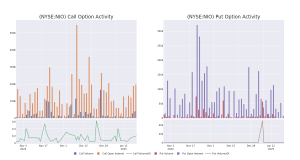- Accelerated commercial growth strategy grounded on strong foundation built over the last decade and leveraging many opportunities ahead
- Focus on margin expansion, consistent cash generation to invest in the business and create long-term value for shareholders
- Capital allocation objectives with disciplined balance sheet management and responsible risk profile
- Air Canada reaffirms full year 2024 guidance and shares expectations for certain financial measures for the full year
- 2025 full year guidance, financial targets for 2028, and long-term aspiration shared
MONTREAL, Dec. 17, 2024 /PRNewswire/ – In conjunction with its 2024 Investor Day being held today at 8:30 a.m. ET., Air Canada today reaffirmed its 2024 full year guidance with certain full-year expectations, announced its 2025 full year guidance, its 2028 key financial targets and 2030 aspirations. The event will be webcast live, and a replay of the investor day along with the presentation materials will be available shortly after the event, at aircanada.com/investors.
“We are proud and excited to share Air Canada’s ambitions. We are announcing a long-term plan grounded on a proven commercial strategy. The story of Air Canada’s performance is one of demonstrated ability to execute and deliver on commitments. Our strategy, which builds on and leverages the unique strengths developed over the last decade, is to rise even higher with consistent margin expansion and structural cash generation while maintaining a strong balance sheet and a responsible risk profile. Our plan includes expanding the network, improving the customer experience, taking care of our employees, enhancing financial performance and continuously investing in the business to generate long-term value for investors, while being mindful of the interests of our stakeholders. We believe we are very well positioned to execute our long-term plans,” said Michael Rousseau, President and Chief Executive Officer of Air Canada.
At the 2024 Investor Day, Mr. Rousseau and members of the executive team will provide details on Air Canada’s strategy, investment thesis and financial targets.
Outlook
Air Canada is reiterating the full year 2024 guidance provided in Air Canada’s news release dated November 1, 2024, and is providing guidance for the full year 2025.
|
Metric |
2023 |
2024 |
2025 |
|
ASM capacity |
99.012 billion |
Approximately 5% |
Between 3% and |
|
Adjusted CASM* |
13.49 ¢ |
Approximately 2% |
Between 14.25 ¢ |
|
Operating expenses |
$19.554 billion |
Not guided |
Not guided |
|
Adjusted EBITDA* |
$3.982 billion |
Approximately $3.5 |
Between $3.4 and |
|
Operating income |
$2.279 billion |
Not guided |
Not guided |
|
Free cash flow* |
$2.756 billion |
Not guided |
Breakeven +/- $200 |
|
Net cash flows from |
$4.320 billion |
Not guided |
Not guided |
Major Assumptions
Air Canada made assumptions in providing its 2024 and 2025 guidance—including moderate Canadian GDP growth for 2024 and 2025. Air Canada also assumes that the Canadian dollar will trade on average, at C$1.36 and C$1.40 for the full year 2024 and 2025, respectively, and that the price of jet fuel will average C$1.00 and C$0.95 per litre for the full year 2024 and 2025, respectively.
In addition, Air Canada shared its expectations for certain financial measures for the full year 2024, its long-term 2028 financial targets and 2030 aspirations which are described below, and which will be discussed during its Investor Day presentations.
|
Metric |
2023 |
2024 |
2028 |
2030 |
|
Operating revenues |
$21.833 billion |
Approximately |
Approximately |
Exceed $30 |
|
Adjusted EBITDA |
18 % |
Approximately |
Greater than or |
Between 18% |
|
Operating margin |
10 % |
Not provided |
Not provided |
Not provided |
|
Net cash flows from |
108 % |
Greater than |
Approximately |
Approximately |
|
Additions to property, |
7 % |
Approximately |
Lower than or |
Lower than |
|
Free cash flow margin* |
13 % |
Between 4% |
Approximately |
Approximately |
|
Return on invested |
18 % |
Not provided |
Not provided |
Greater than or |
|
Fully diluted share |
Approximately |
Not provided |
Lower than 300 |
Lower than 300 |
1Percentage amounts in the table above may not calculate exactly due to rounding.
The 2028 long-term targets and 2030 aspirations provided in this news release do not constitute guidance or outlook, but rather are provided for the purpose of assisting the reader in measuring progress toward Air Canada’s objectives. The reader is cautioned that using this information for other purposes may be inappropriate. Air Canada may review and revise these targets and aspirations including as economic, geopolitical, market and regulatory environments change. These targets and aspirations are used as goals as Air Canada executes on its strategic priorities, and they assume a normal business environment. Air Canada’s ability to achieve these targets and aspirations is also dependent on its success in achieving initiatives and business objectives that are described in the 2024 Investor Day presentations which will be available shortly after the event at aircanada.com/investors, including, but not limited to, those relating to increasing revenues, growing fleet and network capacity, and successfully executing on other key investments and initiatives, as well as other major assumptions, including those described in this news release, and are subject to a number of risks and uncertainties.
Please see the section below entitled “Caution Regarding Forward-Looking Information”.
* Non-GAAP Financial Measures
Adjusted CASM, adjusted EBITDA, adjusted EBITDA margin, free cash flow, net cash flows from operating activities as a percentage of adjusted EBITDA, additions to property, equipment and intangible assets as a percentage of operating revenues, free cash flow margin and return on invested capital are each non-GAAP financial measures or non-GAAP ratios. Such measures are not recognized measures for financial statement presentation under GAAP, do not have standardized meanings, may not be comparable to similar measures presented by other entities and should not be considered a substitute for or superior to GAAP results.
Air Canada uses non-GAAP financial measures and ratios to provide readers with additional information on its financial and operating performance. Non-GAAP financial measures or ratios typically have exclusions or adjustments that include one or more of the following characteristics, such as being highly variable, difficult to project, unusual in nature, significant to the results of a particular period or not indicative of past or future operating results. These items are excluded because Air Canada believes these may distort the analysis of certain business trends and render comparative analysis across periods less meaningful and their exclusion generally allows for a more meaningful analysis of Air Canada’s operating expense performance and may allow for a more meaningful comparison to other airlines.
Net cash flows from operating activities as a percentage of adjusted EBITDA
Air Canada uses net cash flows from operating activities as a percentage of adjusted EBITDA to measure cash conversion from adjusted EBITDA. This measure is defined as the ratio of net cash flows from operating activities to adjusted EBITDA.
Additions to property, equipment and intangible assets as a percentage of operating revenues
Air Canada uses additions to property, equipment and intangible assets as a percentage of operating revenues to measure the proportion of operating revenues that are reinvested as capital expenditures. This measure is defined as the ratio of additions to property, equipment and intangible assets to operating revenues.
Free cash flow margin
Air Canada uses free cash flow margin to measure the amount its free cash flow represents as a percentage of operating revenues. This measure is defined as the ratio of free cash flow to operating revenues.
Return on invested capital
Air Canada uses return on invested capital (ROIC) to assess the efficiency with which it allocates its capital to generate returns. ROIC is calculated as the ratio of adjusted pre-tax income (loss), excluding interest expense, to invested capital. Invested capital includes average year-over-year long-term debt and lease obligations, average year-over-year shareholders’ equity, and the embedded derivative on Air Canada’s convertible notes. In 2020, Air Canada issued convertible unsecured notes. Air Canada has the option to deliver cash or a combination of cash and shares on the conversion date in lieu of shares, giving rise to an embedded derivative that is included as part of the definition of capital. Air Canada calculates invested capital on a book value-based method when calculating ROIC.
Refer to Air Canada’s public disclosure file available at www.sedarplus.ca and, in particular Air Canada’s Third Quarter news release dated November 1, 2024, and sections 16 and 20 (Non-GAAP Financial Measures), respectively, of Air Canada’s Third Quarter 2024 MD&A and 2023 MD&A (which sections are incorporated by reference herein) for an explanation of the composition of Air Canada’s other non-GAAP financial measures and non-GAAP ratios referred to in this news release and for a reconciliation to the most comparable GAAP financial measure.
CAUTION REGARDING FORWARD-LOOKING INFORMATION
This news release includes forward-looking statements within the meaning of applicable securities laws. Forward-looking statements relate to analyses and other information that are based on forecasts of future results and estimates of amounts not yet determinable. These statements may involve, but are not limited to, comments relating to guidance, strategies, expectations, planned operations or future actions. Forward-looking statements are identified using terms and phrases such as “preliminary”, “anticipate”, “believe”, “could”, “estimate”, “expect”, “intend”, “may”, “plan”, “predict”, “project”, “will”, “would”, and similar terms and phrases, including references to assumptions.
Forward-looking statements, by their nature, are based on assumptions including those described herein and are subject to important risks and uncertainties. Forward-looking statements cannot be relied upon due to, among other things, changing external events and general uncertainties of the business of Air Canada. Actual results may differ materially from results indicated in forward-looking statements due to a number of factors, including those discussed below.
Factors that may cause results to differ materially from results indicated in forward-looking statements include economic conditions as well as geopolitical conditions such as the military conflicts in the Middle East and between Russia and Ukraine, Air Canada’s ability to successfully achieve or sustain positive net profitability, industry and market conditions and the demand environment, competition, Air Canada’s dependence on technology, cybersecurity risks, interruptions of service, climate change and environmental factors (including weather systems and other natural phenomena and factors arising from anthropogenic sources), Air Canada’s dependence on key suppliers (including government agencies and other stakeholders supporting airport and airline operations), employee and labour relations and costs, Air Canada’s ability to successfully implement appropriate strategic and other important initiatives (including Air Canada’s ability to manage operating costs), energy prices, Air Canada’s ability to pay its indebtedness and maintain or increase liquidity, Air Canada’s dependence on regional and other carriers, Air Canada’s ability to attract and retain required personnel, epidemic diseases, changes in laws, regulatory developments or proceedings, terrorist acts, war, Air Canada’s ability to successfully operate its loyalty program, casualty losses, Air Canada’s dependence on Star Alliance® and joint ventures, Air Canada’s ability to preserve and grow its brand, pending and future litigation and actions by third parties, currency exchange fluctuations, limitations due to restrictive covenants, insurance issues and costs, and pension plan obligations as well as the factors identified in Air Canada’s public disclosure file available at www.sedarplus.ca and, in particular, those identified in section 18 “Risk Factors” of Air Canada’s 2023 MD&A and section 14 “Risk Factors” of Air Canada’s Third Quarter 2024 MD&A.
Air Canada has and continues to establish targets, make commitments and assess the impact regarding climate change, and related initiatives, plans and proposals that Air Canada and other stakeholders (including government, regulatory and other bodies) are pursuing in relation to climate change and carbon emissions. The achievement of our commitments and targets depends on many factors, including the combined actions of governments, industry, suppliers and other stakeholders and actors, as well as the development and implementation of new technologies. In particular, our 2030 carbon emission-related targets and our related 2050 aspiration are ambitious and heavily dependent on new technologies, renewable energies and the availability of a sufficient supply of sustainable aviation fuels (SAF), which continues to present serious challenges. In addition, Air Canada has incurred, and expects to continue to incur, costs to achieve its goal of net-zero carbon emissions and to comply with environmental sustainability legislation and regulation and other standards and accords. The precise nature of future binding or non-binding legislation, regulation, standards and accords, on which local and international stakeholders are increasingly focusing, cannot be predicted with any degree of certainty, nor can their financial, operational or other impact. There can be no assurance of the extent to which any of our climate goals will be achieved or that any future investments that we make in furtherance of achieving our climate goals will produce the expected results or meet increasing stakeholder environmental, social and governance expectations. Moreover, future events could lead Air Canada to prioritize other nearer-term interests over progressing toward our current climate goals based on business strategy, economic, regulatory and social factors, and potential pressure from investors, activist groups or other stakeholders. If we are unable to meet or properly report on our progress toward achieving our climate change goals and commitments, we could face adverse publicity and reactions from investors, customers, advocacy groups or other stakeholders, which could result in reputational harm or other adverse effects to Air Canada.
The forward-looking statements contained or incorporated by reference in this news release represent Air Canada’s expectations as of the date of this news release (or as of the date they are otherwise stated to be made) and are subject to change after such date. However, Air Canada disclaims any intention or obligation to update or revise any forward-looking statements whether because of new information, future events or otherwise, except as required under applicable securities regulations.
About Air Canada
Air Canada is Canada’s largest airline, the country’s flag carrier and a founding member of Star Alliance, the world’s most comprehensive air transportation network. Air Canada provides scheduled service directly to more than 180 airports in Canada, the United States and Internationally on six continents. It holds a Four-Star ranking from Skytrax. Air Canada’s Aeroplan program is Canada’s premier travel loyalty program, where members can earn or redeem points on the world’s largest airline partner network of 45 airlines, plus through an extensive range of merchandise, hotel and car rental partners. Through Air Canada Vacations, it offers more travel choices than any other Canadian tour operator to hundreds of destinations worldwide, with a wide selection of hotels, flights, cruises, day tours, and car rentals. Its freight division, Air Canada Cargo, provides air freight lift and connectivity to hundreds of destinations across six continents using Air Canada’s passenger and freighter aircraft. Air Canada’s climate ambition includes a long-term aspirational goal of net-zero greenhouse gas emissions by 2050. For additional information, please see Air Canada’s TCFD disclosure. Air Canada shares are publicly traded on the TSX in Canada and the OTCQX in the US.
Internet: aircanada.com/investors
![]() View original content to download multimedia:https://www.prnewswire.com/news-releases/air-canada-announces-long-term-plan-at-its-2024-investor-day-setting-2028-targets-of-30-billion-operating-revenues-at-least-17-adjusted-ebitda-margin-and-approximately-5-free-cash-flow-margin-by-2028-302333468.html
View original content to download multimedia:https://www.prnewswire.com/news-releases/air-canada-announces-long-term-plan-at-its-2024-investor-day-setting-2028-targets-of-30-billion-operating-revenues-at-least-17-adjusted-ebitda-margin-and-approximately-5-free-cash-flow-margin-by-2028-302333468.html
SOURCE Air Canada
© 2024 Benzinga.com. Benzinga does not provide investment advice. All rights reserved.



